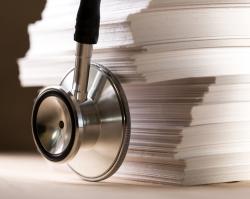Over the past ten years and since the publication of the Institute of Medicine landmark book “To Err Is Human” there have been many attempts to reduce preventable medical errors which are estimated to take about 100,000 lives per year – perhaps many more. The question is whether all of this effort has had a substantial clinical impact.
Over the past ten years and since the publication of the Institute of Medicine landmark book “To Err Is Human” there have been many attempts to reduce preventable medical errors which are estimated to take about 100,000 lives per year – perhaps many more. The question is whether all of this effort has had a substantial clinical impact.
The results of a recently published study are therefore concerning. A group lead by Dr Landrigan at Harvard evaluated the number of “harms” which occurred at ten randomly selected North Carolina hospitals. They taught a cadre of reviewers to use “triggers” in the medical record to prompt further analysis for an error that caused harm. The harms were categorized into five groups with E being temporary yet requiring an intervention through, F temporary but requiring initial or prolonged hospitalization, G permanent harm, H as life threatening harm and I causing or contributing to death. They then selected 10 records per quarter for the years 2002 through 2007 from each hospital, at random. The records were then reviewed in a random order by multiple internal and external trained reviewers, both nurses and doctors.
They found 588 harms among the 10,415 patient days or 57 harms/1000 days or 25 harms per 100 admissions. About 63% or 364 of the 588 harms were classified as preventable! These included 13 that caused permanent injury, 35 being life threatening and 9 contributing or leading to death.
Similar to prior studies, the harms occurred most frequently after procedures and medications. Most harms fell into categories E (144) and F (163).
It was disappointing to find that the rates of adverse events did not decline over the study time period. This, despite the fact that in North Carolina has an enviable record of a high level of engagement in patient safety programs and studies.
So there are still plenty of adverse events that occur in a hospital, they are most likely to be related to procedures or medications, most are preventable, and all too many are life threatening or lead to death.
This leads to the question of whether the many and various approaches that hospitals have embarked upon are actually doing what they need to do. It may be time for a reappraisal. Certainly a patient should have the expectation of not being harmed when in the hospital.









